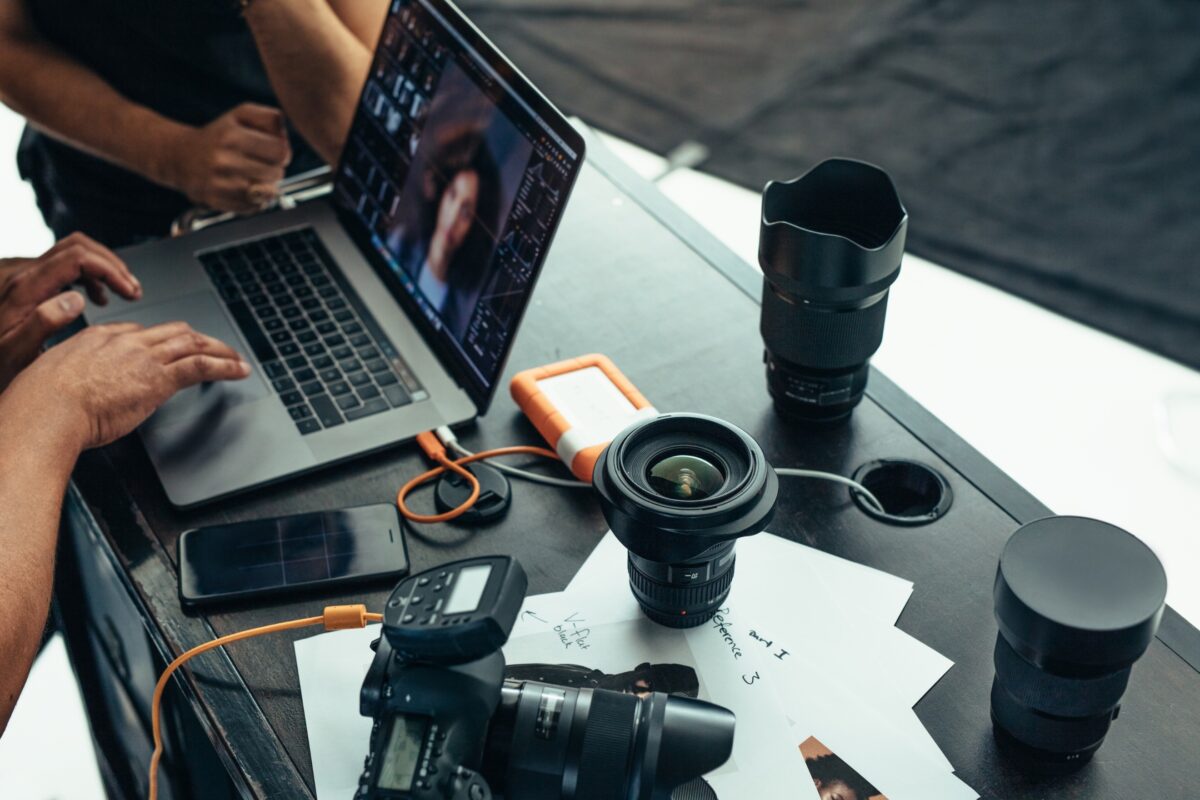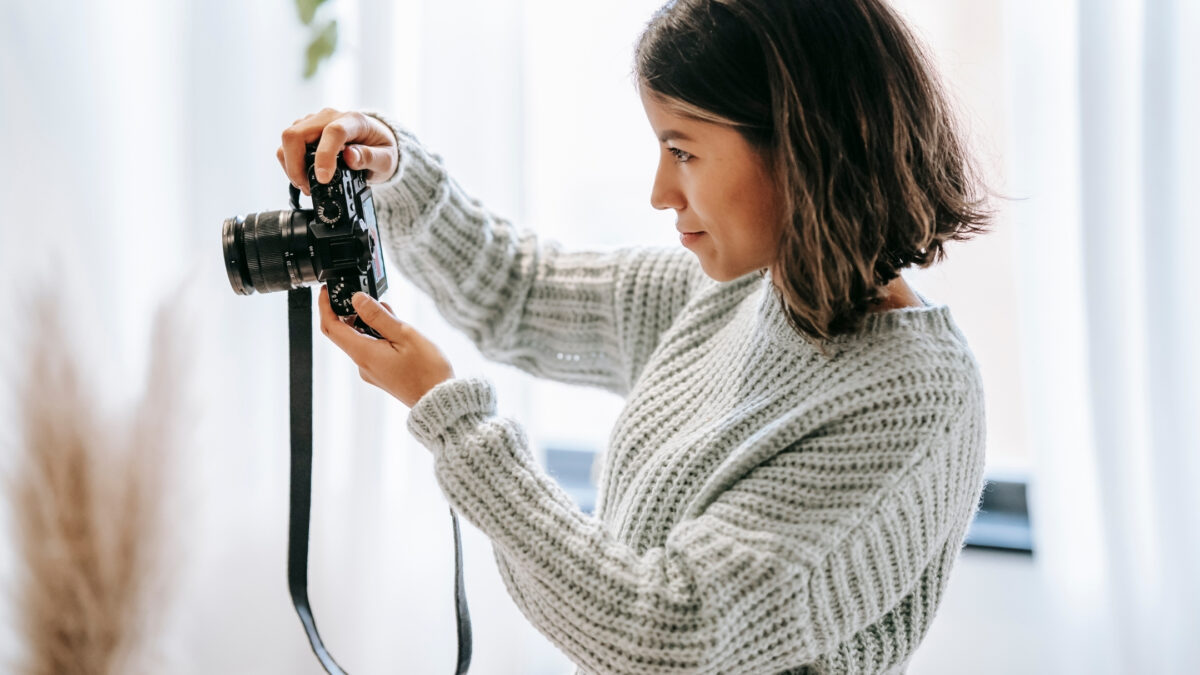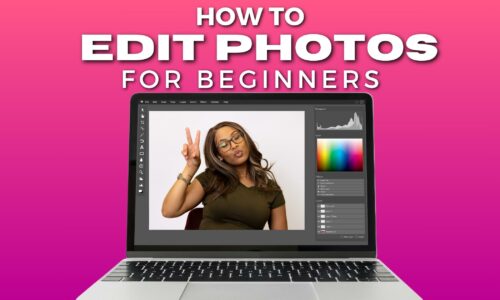How to Get and Give Feedback on Photos as a Photographer
The shutter clicks and you review the photo you’ve taken.
Is it a great picture? Or something you’re going to delete right away?
You’d like feedback on your photos to know.
But you’re hesitant to show your work to others. Because most of the time, their responses lack kindness or concrete suggestions.
And no one takes the time to critique your photos. Then when they do, the feedback is too general (like “nice pic!”) to help you improve.
Well… let’s address this once and for all and learn how to get quality feedback on your photography.
As well as how to give thoughtful, actionable advice to your fellow photographers if you’re the one reviewing their images.
That way, you can build a network of supportive peers. And strengthen your skills as a photographer.

Understanding Constructive Criticism
In the realm of art, particularly photography, the ability to give and receive feedback is important to grow and develop your skills.
The Meaning of Constructive Critique
Constructive critique provides thoughtful feedback focused on specific ways to improve something rather than just general praise or criticism.
And constructive criticism, especially in photography, serves as a bridge between where your skills currently stand and where they could be.
It relies on an approach that is:
- Clear: Your feedback should be straightforward and understandable, focusing on specific aspects of the photograph, like composition or lighting.
- Actionable: Advice on tangible steps for improvement. For example, “Increasing the shutter speed could reduce motion blur in your action shots.
- Respectful: Ensure your tone conveys respect and your intention to support the photographer’s development.
Helpful vs. Harsh Feedback on Photos

When you receive feedback, it’s important to determine whether it’s meant to be helpful or if it’s simply harsh. Here’s how to tell the difference:
- Helpful Feedback:
- Begins and often ends with positive observations.
- Delivers critique without personal bias.
- Focuses on improvement over judgment.
- Harsh Feedback:
- Prioritizes opinion over factual grounds for improvement.
- May disregard your feelings or the effort put into the work.
- Lacks suggestions for how to better your art.
The tone of the feedback can signify its intent. If the critique is presented in a manner that makes you feel understood and motivated, it’s likely coming from a place of constructive support.
How to Receive Feedback on Photos

Getting feedback on your photos is not just about hearing what others think.
It’s about using their suggestions to help you grow and refine your work. So, let’s talk about how you can best position yourself to accept and use the feedback they’ve given you.
Preparing Yourself Emotionally
Before you even present your work for feedback, detach your ego from the equation.
Have the mindset that every critique is an opportunity to learn, not a personal attack. And remind yourself why you love photography. As well as affirm your commitment to improve.
It’s normal to feel vulnerable when sharing personal work.
But when you take your emotions out of it, you’re not defensive. Instead, you’re open to what you’re about to hear.
Active Listening and Asking Questions
When you’re getting feedback, engage in active listening.
Nod to show understanding and maintain eye contact to demonstrate your attentiveness. Show the other person that you value their feedback.
And ask clarifying questions about specific aspects of your work if you need to.
For example:
- “Can you elaborate on how the lighting could be improved?”
- “What makes the composition stand out, or what detracts from it?”
This direct approach not only shows respect for the reviewer’s input. But it shows you’ve received detailed information that can guide your growth.
Using The Feedback of Others to Fuel Your Improvement

Finally, translate the feedback you’ve gotten into actionable steps.
If a reviewer suggests that the contrast in your image is off, take this as a concrete point to explore in future edits.
I also recommend keeping a notebook or a digital document where you can jot down recurring themes in the feedback you’re getting.
Then use your notes to identify areas for consistent improvement.
What to Look for When Analyzing Photos

When analyzing photographs, your focus should be on three fundamental aspects: composition and framing, lighting, and color contrast.
Each of these components plays a role in how the photograph communicates its intended message.
Evaluating Composition and Framing
Composition is the pillar of a strong photograph.
It’s about how your subjects are arranged within the frame. Look for elements like the rule of thirds, leading lines, and symmetry to evaluate how they guide your eye through the picture.
Here’s a quick recap of these 3 terms:
- Rule of Thirds: Imagine your image is divided into nine equal segments by two vertical and two horizontal lines. Key elements should be placed along these lines or their intersections.
- Leading Lines: Use lines within the composition to lead the viewer’s eye to the focal point.
- Symmetry and Balance: Check if the photo has symmetry, which can add a sense of harmony and balance, or if it intentionally uses asymmetry to create tension or highlight a particular aspect.
Assessing the Use of Lighting
Lighting is also very important in photography. As it can dramatically alter the mood of your image.
Pay attention to the lighting technique. Is the light source soft? Does it create a gentle and even look? Or is it hard, resulting in strong contrasts and sharp shadows?
Also, note the:
- Direction: Does the light fall from the side, front, or back, and how does it shape the subject?
- Quality: Look for the softness or harshness of shadows and highlights.
- Exposure: Ensure the photograph is neither too dark (underexposed) nor too blown out (overexposed).
Reviewing Color and Contrast

Color and contrast can evoke feelings and draw attention to specific parts of the photo.
Try and tell how the photographer uses these tools to communicate the image’s message.
And when you’re examining a photo, look at the:
- Color Harmony: Identify if there are complementary colors that create a dynamic look or analogous colors that offer a serene and cohesive feel.
- Contrast: It’s not just about black and white. This is the degree of difference between tones. High-contrast images have a bolder look with more defined lines, while low-contrast might give a softer, subtler emotion.
Each of these components contributes to the art of photography. And when you understand these basics, you can better appreciate the creative decisions behind a photograph.
Giving you the opportunity to offer more insightful feedback.
How to Give Constructive Feedback on Photos

Now, when giving feedback on photos, your aim is to support and encourage the photographer’s development.
Focus on promoting collaboration and improvement by being clear, specific, and balanced.
Creating a Positive Environment
Before diving into the details of the photo, set a supportive tone.
Praise the effort and passion behind the work. Let the photographer know you appreciate their willingness to share their work with you. Your positive approach can greatly influence how your feedback is received.
- Create Comfort: Encourage openness to facilitate a productive dialogue.
- Be Respectful: Recognize the vulnerability involved in someone sharing creative work.
Offering Specific Suggestions
Concrete advice is necessary.
Instead of saying, “This could be better,” pinpoint the areas that could improve and offer solutions or resources. For example:
- Composition: “Have you considered the rule of thirds here to draw more attention to your subject?”
- Lighting: “Playing with the light direction might enhance the mood of your scene.”
- Post-Processing: “Adjusting the white balance could warm up the tones in this sunset shot.”
Balancing Strengths and Weaknesses
While it’s important to address areas for improvement, it’s equally important to highlight what’s working well.
Balance your critique to maintain motivation.
- Start With Strengths: Begin with what you like about the photo.
- Provide Constructive Critiques: Follow up with specific, actionable feedback.
- End on a Positive Note: Ensure the photographer knows what they’re doing right.
Your goal as the person giving feedback is to guide and support your fellow photographer. Because your feedback and the feedback you receive from others is a valuable part of the journey.
Improving Your Photography Skills With Feedback
Once you’ve gotten feedback on your photos, it’s time for growth and fine-tuning your skills.

Learning from Others’ Insights
Think of each piece of critique as a little nugget of wisdom that you’re collecting from fellow photographers. You’ll absorb varied perspectives that can highlight aspects of your work you might not notice by yourself.
Embrace others’ personal experiences because it’s as if you’re borrowing their eyes, and through their vision, you’ll discover new ways to approach your craft.
- Listen actively to the critique.
- Reflect on how it applies to your skill and technique.
Implementing Feedback in Practice
Feedback becomes valuable only when you actively implement it in your work.
If someone suggests changing the angle for better composition, try it out the next time you’re shooting. And reflect on the feedback’s relevance:
| Feedback | Action | Improvement Seen |
|---|---|---|
| Brightness too high | Use lower exposure settings or filters | More balanced and pleasing exposure |
| Subject not in focus | Practice manual focusing or adjust autofocus settings | Crisper, more defined subject detail |
Remember, not all feedback will work for every genre or style.
So it’s okay to keep what resonates with you and graciously set aside what doesn’t.
Developing a Personal Style

Your unique style is what sets you apart in a sea of photographers. As you absorb feedback, merge it with your taste and preferences.
You’re not looking to clone someone else’s style. But to refine yours.
Think of feedback as ingredients in a recipe. You decide what to add to perfect the flavor to your personal liking.
Because photography, like any art form, is subjective.
Craft your narrative through your lens, and let the improvement in your skills show through the images and stories you capture.
FAQs
What are the best ways to approach giving constructive feedback on a photograph?
To offer constructive feedback on a photograph, start by highlighting what works well before moving on to what could be improved. Be specific and focus on elements such as composition, lighting, and emotion. Discuss how these aspects contribute to the overall impact of the image, and offer clear suggestions on how they might be enhanced or corrected.
How can I ask for critique on my own photos in a way that encourages constructive advice?
Invite critique by posing open-ended questions about specific elements of your photo. For instance, ask how the lighting affects the mood or if the composition directs attention effectively. Demonstrating your openness to growth and pinpointing areas you’re uncertain about can encourage others to provide thoughtful, constructive advice.
What should I focus on when critiquing the composition of a photo?
Composition can be critiqued by examining the use of leading lines, symmetry, framing, and the rule of thirds, among other techniques. Consider how these compositional elements guide the viewer’s eye and whether they enhance the subject matter and storytelling of the photograph.
Can you describe a process for analyzing and providing feedback on the lighting in a photograph?
In analyzing lighting, observe the direction, quality, and mood created by the light. Is it soft or harsh? Does it cast interesting shadows or highlight key aspects of the subject? Provide feedback on how the lighting could be used differently to improve the image or how it adds to the story being told.
What are some tips for writing a friendly and effective photography critique essay?
Keep your tone supportive and encouraging, even when pointing out areas for improvement. Use specific examples from the photograph to illustrate your points and suggest ways to overcome any weaknesses. Remember, the goal is to help the photographer grow, not to diminish their confidence.
How does one differentiate between constructive criticism and negative feedback in the context of photography?
Constructive criticism is focused on improving the work, and providing specific suggestions for enhancement. It is usually balanced with positive remarks. Negative feedback often lacks clear direction for improvement and might be more about personal taste rather than technical or artistic merit. Aim for the former to support and inspire your fellow photographers.





